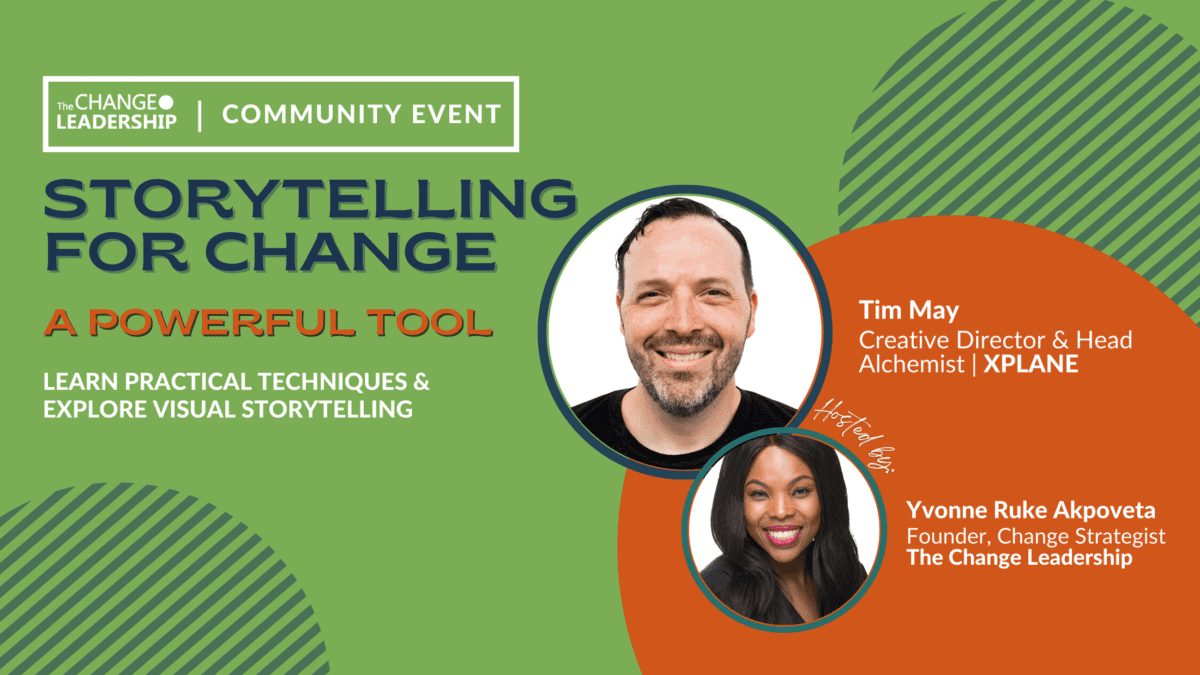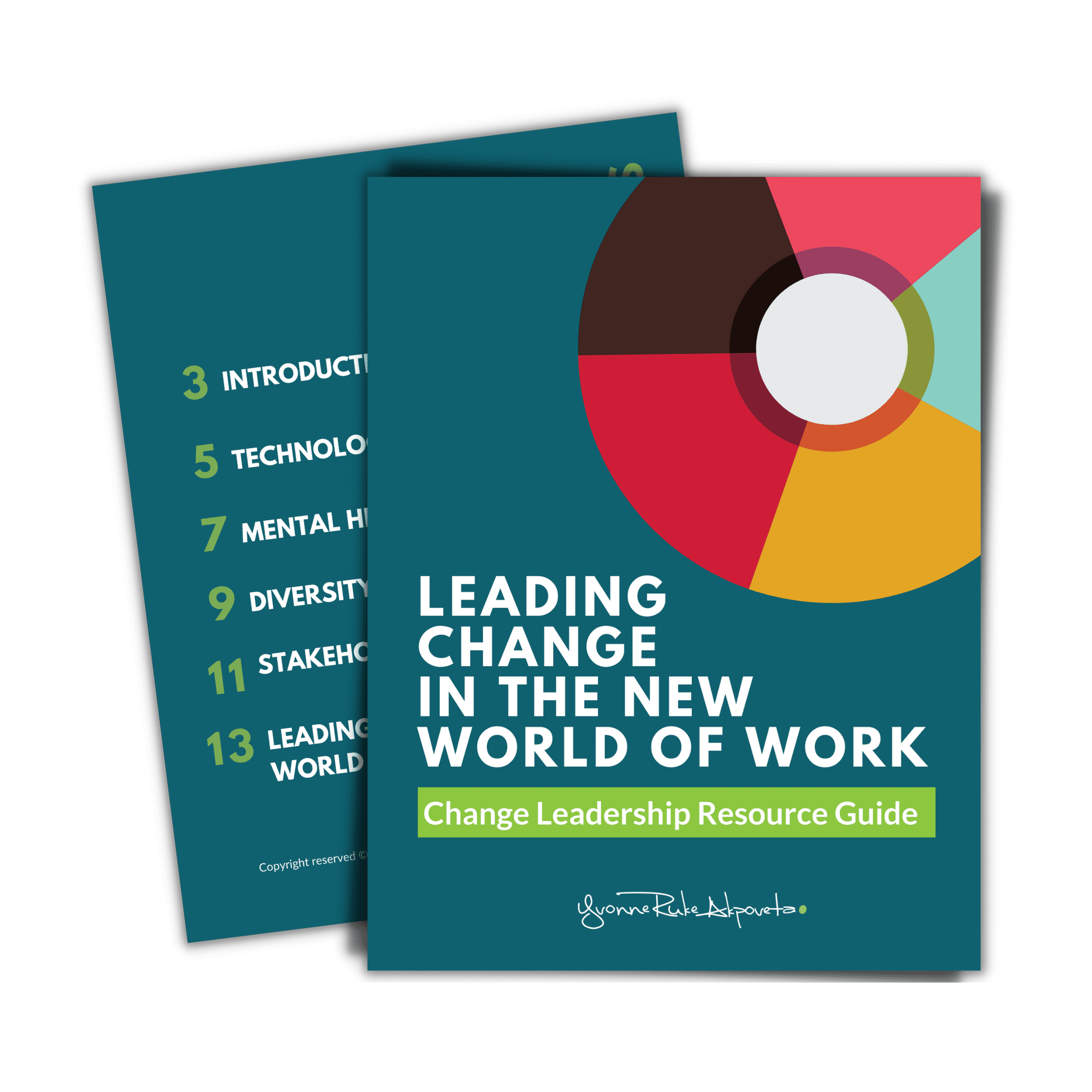The Power of Storytelling in Leading Change
The Power of Storytelling in Leading Change

The pace of change isn’t slowing down, and leaders today must find ways to inspire, engage, and guide their organizations through complexity and uncertainty.
Storytelling is emerging as one of the most powerful tools in a change leader’s toolkit—and for good reason.
At our recent Storytelling for Change event, we brought together change practitioners, leaders, and professionals to explore how storytelling can drive meaningful change. Led by Creative Director & Head Alchemist of XPLANE , Tim May – an expert in narrative-based change strategies – the session was packed with practical tips, real-world examples, and interactive exercises to help leaders harness the art of storytelling.
The insights shared at the event underscored a key truth: Facts and figures inform, but stories inspire action.
The Power of Storytelling in Change
Tim kicked off the conversation by highlighting why storytelling is so effective in the context of change. Change can often be met with resistance, uncertainty, and even fear. But a well-crafted story cuts through the noise and connects with people on an emotional level, making change feel more relatable and less threatening.
He shared a case study which beautifully drove home the point: a compelling story can turn skeptics into champions.

Structuring a Change Story: Proven Frameworks
While storytelling is an art, it’s also a skill that can be learned. Tim shared several storytelling frameworks to help leaders structure their narratives for maximum impact:
- The Story Framework: This simple yet effective structure involves setting the stage (the problem), defining the audience’s needs, presenting the solution, and highlighting the benefits.
- Freytag’s Pyramid: A classic storytelling model that follows five key stages—exposition, inciting incident, rising action, climax, and resolution.
- Narrative Arcs: Whether it’s a tale of triumph, caution, or suspense, understanding the arc of your story can help you shape the emotional journey of your audience.
These frameworks offer a practical starting point for leaders looking to craft stories that inspire and mobilize their teams.
Practical Storytelling Tips for Change Leaders
Storytelling isn’t just for big presentations—it can be integrated into everyday change initiatives. Tim shared actionable tips to help leaders make their stories more engaging, memorable, and effective:
- Create Visual Playbooks: Adding storytelling elements—like metaphors, anecdotes, and sensory details—can make change playbooks more relatable and engaging.
- Use Collaborative Tools: Tools like virtual whiteboards can help teams co-create the narrative, making the story feel more inclusive and dynamic.
- Start with a Hook: A strong opening line grabs attention. Try starting your story with a surprising fact, relatable scenario, or thought-provoking question.
- Personalize Your Story: Sharing personal experiences and using vivid sensory details can make your story more authentic and impactful.
During the session, participants practiced this by describing their childhood rooms—a fun exercise that demonstrated the power of descriptive storytelling.
Gaining Leadership Buy-In
Securing leadership buy-in is one of the biggest hurdles in organizational transformation. It’s not enough to present raw data or well-meaning intentions; leaders want compelling, results-driven narratives that connect the dots between change initiatives and tangible outcomes.
During the event, Tim May revealed that storytelling isn’t just a nice-to-have—it’s a strategic tool that can capture leadership’s attention and drive buy-in. Contrary to the assumption that executives only care about metrics, many leaders are, at heart, natural storytellers. The key? Blending numerical evidence with a narrative that creates urgency and shows real-world impact.
Host, Yvonne Ruke Akpoveta, Change Strategist and Founder of The Change Leadership, shared that when looking to get leadership buy-in to the Change, one effective strategy was to start with a hook from a place of empathy and understanding of your audience’s needs. This could be “shock element” right at the beginning to get the leader’s attention. For example:
-
Quantify Potential Losses: If 20% of employees leave during a poorly managed change, how much will it cost the organization to recruit and train replacements? Presenting the cost of turnover versus the cost of proactive change can be eye-opening.
-
Demonstrate the Cost of Inaction: Sometimes, showing what’s at stake financially if the change doesn’t happen can be more powerful than explaining the benefits of success.
Starting with stark facts and figures helps build urgency, while Tim’s advice of contrasting “the world as it is” with “the world as it could be” helps leadership envision the better future state your change initiative can bring. By grounding your story in both logic and emotion, you can align leadership’s goals with the change journey—and get the buy-in needed to drive real transformation.

The Human Side of Change
One key theme emerged throughout the session: While storytelling frameworks and techniques are important, the heart of any effective story is authenticity. Don’t be afraid to get creative, share personal experiences, and put the human side of change at the forefront.
As Tim reminded us, “Stories connect us. They remind us why we’re here, what we’re working toward, and why change matters.”
Key Takeaways and Next Steps
So, how can you start incorporating storytelling into your change efforts? Here are some practical recommendations based on the session:
- Practice storytelling techniques in your change communication.
- Download the PDF worksheet shared during the session to help you structure your next story.
- Create a visual playbook for your change initiative, incorporating storytelling elements to make it more engaging.
- Experiment with new formats and hooks in your presentations.
- Encourage your leaders to use storytelling in their communication strategies.
Join us at the Change Leadership Conference on May 27, where we’ll dive deeper into creating your practical playbook for leading change.
And if you’re ready to take your storytelling skills to the next level and dive deeper, join Tim May’s Storytelling for Change course, offering practical guidance on crafting compelling, data-driven narratives that resonate with leaders and teams alike.
Bonus for our community: You can get 15% off the October session—because every great change leader deserves the tools to tell unforgettable stories.
Are you a change leader interested in creating your own Practical Playbook for Leading Change? Click HERE to join industry experts, change leaders, and forward-thinking professionals in gaining actionable strategies, insights, and tools to success!




